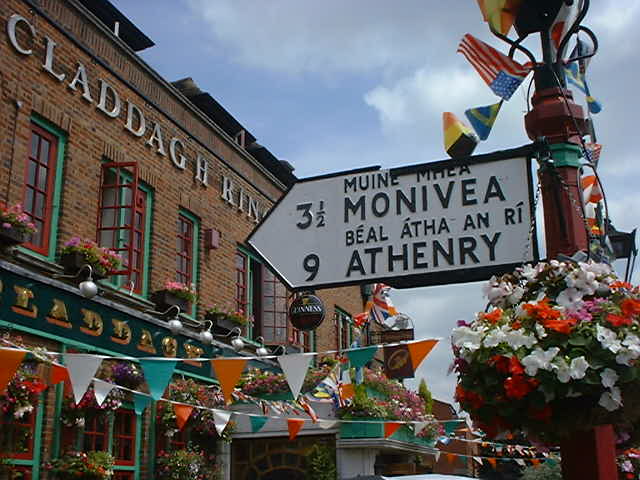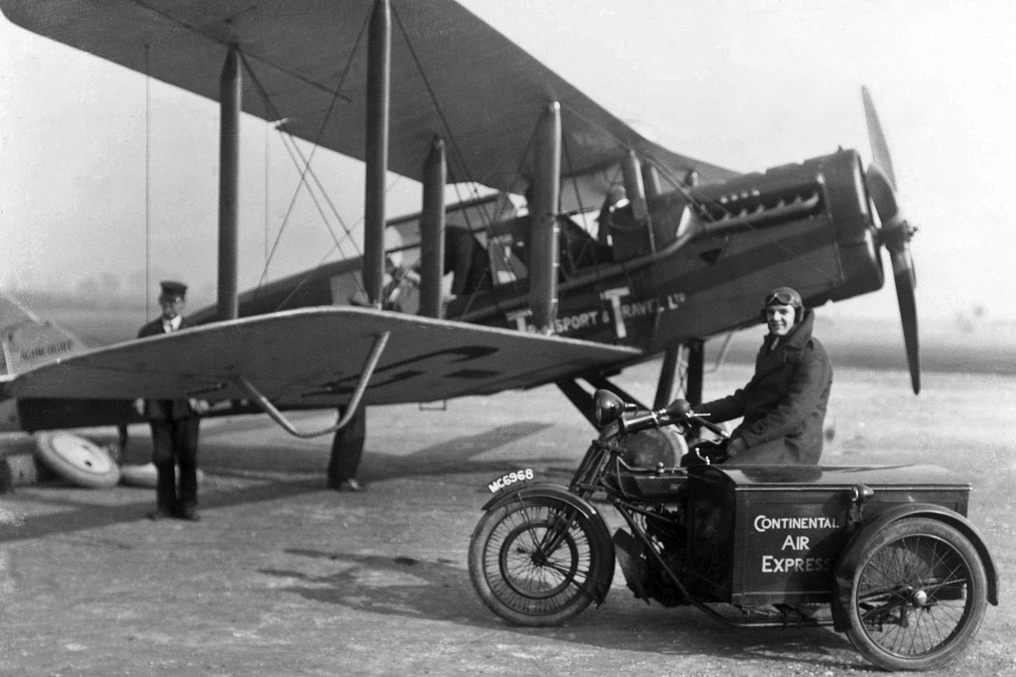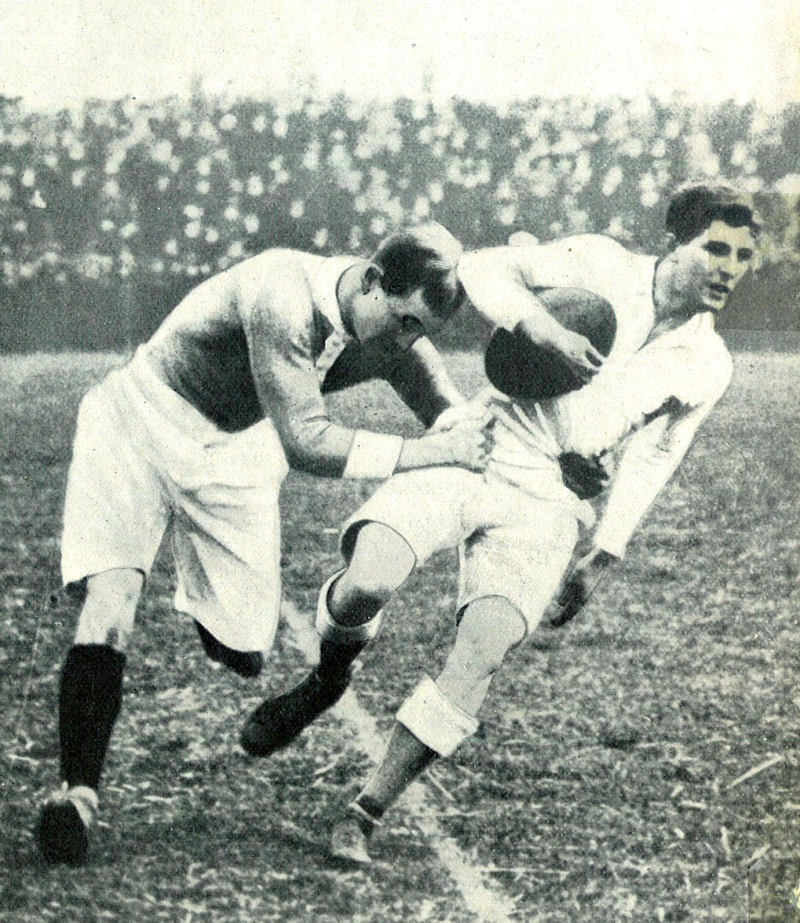|
James Latta (RAF Officer)
James Douglas Latta, MC (13 May 1897 – 1974) was a British flying ace of the First World War, credited with five aerial victories. Early life and background Latta was the second son of James Gilmore Latta (1865–1927) from Troon and Agnes (née Douglas) from Tarbolton. His father was an engineer who had worked for the companies of Andrew Barclay and G. & J. Weir, before becoming part-owner and managing director of the Scottish Stamping & Engineering Company at Ayr in 1920. Latta was educated at University College School, London. First World War On the outbreak of the First World War in 1914, both Latta and his older brother, John, enlisted in the London Scottish Regiment, but both subsequently transferred to the Royal Flying Corps. Latta was commissioned as a second lieutenant (on probation) in the RFC on 9 February 1915, and was granted Royal Aero Club Aviators' Certificate No. 2067 on 16 November, after flying a Maurice Farman biplane at the Military School at ... [...More Info...] [...Related Items...] OR: [Wikipedia] [Google] [Baidu] |
Hendon
Hendon is an urban area in the Borough of Barnet, North-West London northwest of Charing Cross. Hendon was an ancient manor and parish in the county of Middlesex and a former borough, the Municipal Borough of Hendon; it has been part of Greater London since 1965. Hendon falls almost entirely within the NW4 postcode, while the West Hendon part falls in NW9. Colindale to the north-west was once considered part of Hendon but is today separated by the M1 motorway. The district is most famous for the London Aerodrome which later became the RAF Hendon; from 1972 the site of the RAF station was gradually handed over to the RAF Museum. The railways reached Hendon in 1868 with Hendon station on the Midland Main Line, followed by the London Underground further east under the name Hendon Central in 1923. Brent Street emerged as its commercial centre by the 1890s. A social polarity was developed between the uphill areas of Hendon and the lowlands around the railway station. Hendon is l ... [...More Info...] [...Related Items...] OR: [Wikipedia] [Google] [Baidu] |
Royal Aero Club
The Royal Aero Club (RAeC) is the national co-ordinating body for air sport in the United Kingdom. It was founded in 1901 as the Aero Club of Great Britain, being granted the title of the "Royal Aero Club" in 1910. History The Aero Club was founded in 1901 by Frank Hedges Butler, his daughter Vera and the Hon Charles Rolls (one of the founders of Rolls-Royce), partly inspired by the Aero Club of France. It was initially concerned more with ballooning but after the demonstrations of heavier-than air flight made by the Wright Brothers in France in 1908, it embraced the aeroplane. The original club constitution declared that it was dedicated to 'the encouragement of aero auto-mobilism and ballooning as a sport.' As founded, it was primarily a London gentlemen's club, but gradually moved on to a more regulatory role. It had a clubhouse at 119 Piccadilly, which it retained until 1961.Anthony Lejeune, ''The Gentlemen's Clubs of London'' (London, 1978) p.178 The club was granted its ... [...More Info...] [...Related Items...] OR: [Wikipedia] [Google] [Baidu] |
Airco DH
The Aircraft Manufacturing Company Limited (Airco) was an early United Kingdom, British aircraft manufacturer. Established during 1912, it grew rapidly during the First World War, referring to itself as the largest aircraft company in the world by 1918. Airco produced many thousands of aircraft for both the British and Allied military air wings throughout the war, including fighter aircraft, fighters, trainer aircraft, trainers and medium bomber, bombers. The majority of the company's aircraft were designed in-house by Airco's chief designer Geoffrey de Havilland. Airco established the first airline in the United Kingdom, Aircraft Transport and Travel Limited, which operated as a subsidiary of Airco. On 25 August 1919, it commenced the world's first regular daily international service. Following the end of the war, the company's fortunes rapidly turned sour. The interwar period was unfavourable for aircraft manufacturers largely due to a glut of surplus aircraft from the war ... [...More Info...] [...Related Items...] OR: [Wikipedia] [Google] [Baidu] |
Cyril Lowe
Cyril Nelson "Kit" Lowe, (7 October 1891 – 6 February 1983) was an English rugby union footballer who held England's international try scoring record for over sixty years, a First World War flying ace credited with nine victories, and supposedly the inspiration for W. E. Johns' character "Biggles". Early life Lowe was born in Holbeach, Lincolnshire. He attended Dulwich College where he was a boarder in Orchard House. He edited the school magazine, ''The Alleynian'' from 1910–11, as his fellow alumnus P. G. Wodehouse had done previously. At Dulwich, he excelled at a number of sports, and represented the school in boxing, athletics, swimming, cricket and rugby. He captained the Athletics squad in 1911 and in the same year played for the first XI cricket squad. In this same cricket side, he played alongside future England captain, Arthur Gilligan, the future Essex wicket-keeper Frank Gilligan and R. K. Nunes; the future captain of the West Indies. Eclipsing these sporting ... [...More Info...] [...Related Items...] OR: [Wikipedia] [Google] [Baidu] |
Auxiliary Air Force
The Royal Auxiliary Air Force (RAuxAF), formerly the Auxiliary Air Force (AAF), together with the Air Force Reserve, is a component of His Majesty's Reserve Air Forces (Reserve Forces Act 1996, Part 1, Para 1,(2),(c)). It provides a primary reinforcement capability for the regular service, and consists of paid volunteers who give up some of their weekends, evenings and holidays to train at one of a number of squadrons around the United Kingdom. Its current mission is to provide trained personnel in support of the regular RAF. Formation The Royal Auxiliary Air Force owes its origin to Lord Trenchard's vision of an elite corps of civilians who would serve their country in flying squadrons in their spare time. Instituted by Order in Council on 9 October 1924, the first Auxiliary Air Force squadrons were formed the following year. The pilots of AAF squadrons were generally formed from the wealthier classes, as applicants were expected to already have, or be prepared to obtain, their ... [...More Info...] [...Related Items...] OR: [Wikipedia] [Google] [Baidu] |
Wounded In Action
Wounded in Action (WIA) describes combatants who have been wounded while fighting in a combat zone during wartime, but have not been killed. Typically, it implies that they are temporarily or permanently incapable of bearing arms or continuing to fight. Generally, the Wounded in Action are far more numerous than those killed. Common combat injuries include second and third degree burns, broken bones, shrapnel wounds, brain injuries, spinal cord injuries, nerve damage, paralysis, loss of sight and hearing, post-traumatic stress disorder (PTSD), and limb loss. For the U.S. military, becoming WIA in combat generally results in subsequent conferral of the Purple Heart, because the purpose of the medal itself (one of the highest awards, military or civilian, officially given by the American government) is to recognize those killed, incapacitated, or wounded in battle. NATO's definitions Wounded in action A battle casualty other than '' killed in action'' who has incurred an injur ... [...More Info...] [...Related Items...] OR: [Wikipedia] [Google] [Baidu] |
Sopwith Pup
The Sopwith Pup is a British single-seater biplane fighter aircraft built by the Sopwith Aviation Company. It entered service with the Royal Naval Air Service and the Royal Flying Corps in the autumn of 1916. With pleasant flying characteristics and good manoeuvrability, the aircraft proved very successful. The Pup was eventually outclassed by newer German fighters, but it was not completely replaced on the Western Front until the end of 1917. Remaining Pups were relegated to Home Defence and training units. The Pup's docile flying characteristics also made it ideal for use in aircraft carrier deck landing and takeoff experiments and training. Design and development In 1915, Sopwith produced a personal aircraft for the company's test pilot Harry Hawker, a single-seat, tractor biplane powered by a seven-cylinder Gnome rotary engine which was known as Hawker's Runabout. Another four similar aircraft have been tentatively identified as Sopwith Sparrows. Sopwith next developed ... [...More Info...] [...Related Items...] OR: [Wikipedia] [Google] [Baidu] |
Gazetted
A gazette is an official journal, a newspaper of record, or simply a newspaper. In English and French speaking countries, newspaper publishers have applied the name ''Gazette'' since the 17th century; today, numerous weekly and daily newspapers bear the name ''The Gazette''. Etymology ''Gazette'' is a loanword from the French language, which is, in turn, a 16th-century permutation of the Italian ''gazzetta'', which is the name of a particular Venetian coin. ''Gazzetta'' became an epithet for ''newspaper'' during the early and middle 16th century, when the first Venetian newspapers cost one gazzetta. (Compare with other vernacularisms from publishing lingo, such as the British ''penny dreadful'' and the American ''dime novel''.) This loanword, with its various corruptions, persists in numerous modern languages (Slavic languages, Turkic languages). Government gazettes In England, with the 1700 founding of ''The Oxford Gazette'' (which became the ''London Gazette''), the word ... [...More Info...] [...Related Items...] OR: [Wikipedia] [Google] [Baidu] |
Observation Balloon
An observation balloon is a type of balloon that is employed as an aerial platform for intelligence gathering and artillery spotting. Use of observation balloons began during the French Revolutionary Wars, reaching their zenith during World War I, and they continue in limited use today. Synonyms include espionage balloon, reconnaissance balloon, or surveillance balloon. Historically, observation balloons were filled with hydrogen. The balloons were fabric envelopes filled with hydrogen gas, whose flammable nature led to the destruction of hundreds of balloons on both sides. Observers manning these observation balloons frequently had to use a parachute to evacuate their balloon when it came under attack. To avoid the potentially flammable consequences of hydrogen, observation balloons after World War I were often filled with non-flammable helium. Typically, balloons were tethered to a steel cable attached to a winch that reeled the gasbag to its desired height (usually 1,000-1,5 ... [...More Info...] [...Related Items...] OR: [Wikipedia] [Google] [Baidu] |
Balloon Buster
Balloon busters were military pilots known for destroying enemy observation balloons. These pilots were noted for their fearlessness, as balloons were stationary targets able to receive heavy defenses, from the ground and the air. Seventy-seven flying aces in World War I were each credited with destroying five or more balloons, and thus were balloon aces. The crucial role of observation balloons An observation balloon was both a vulnerable and a valuable target: the balloon was moored in a stationary position and was lifted by flammable hydrogen gas, whose use was necessitated by the scarcity of helium reserves among European powers. The artillery observer, suspended in the wicker basket beneath, typically had a wireless transmitter, binoculars and/or a long-range camera. His job was to observe actions on the front-line and behind it, to spot enemy troop movements or unusual activity of any sort, and to call down artillery fire onto any worthwhile targets. Balloon observers we ... [...More Info...] [...Related Items...] OR: [Wikipedia] [Google] [Baidu] |

_United_Kingdom_Car_Badge.jpg)





